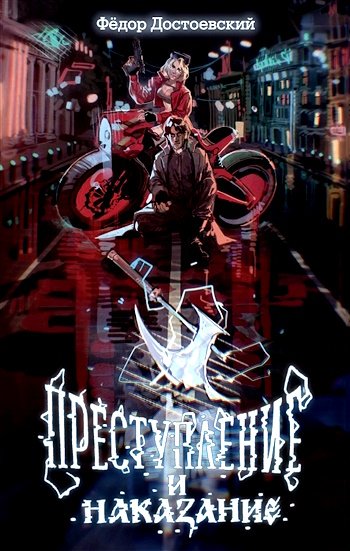He was quickly followed by another of the great Macintosh engineers, Bruce Horn. When Horn went in to say good-bye, Jobs told him, “Everything that’s wrong with the Mac is your fault.”
Horn responded, “Well, actually, Steve, a lot of things that are right with the Mac are my fault, and I had to fight like crazy to get those things in.”
“You’re right,” admitted Jobs. “I’ll give you 15,000
shares to stay.” When Horn declined the offer, Jobs showed his warmer side. “Well, give me a hug,” he said.
And so they hugged.
But the biggest news that month was the departure from Apple, yet again, of its cofounder, Steve Wozniak.
Wozniak was then quietly working as a midlevel engineer in the Apple II division, serving as a humble
Steve Jobs by Walter Isaacson 260
mascot of the roots of the company and staying as far away from management and corporate politics as he could. He felt, with justification, that Jobs was not appreciative of the Apple II, which remained the cash cow of the company and accounted for 70% of its sales at Christmas 1984. “People in the Apple II group were being treated as very unimportant by the rest of the company,” he later said. “This was despite the fact that the Apple II was by far the largest-selling product in our company for ages, and would be for years to come.” He even roused himself to do something out of character; he picked up the phone one day and called Sculley, berating him for lavishing so much attention on Jobs and the Macintosh division.
Frustrated, Wozniak decided to leave quietly to start a new company that would make a universal remote control device he had invented. It would control your television, stereo, and other electronic devices with a simple set of buttons that you could easily program. He informed the head of engineering at the Apple II division, but he didn’t feel he was important enough to go out of channels and tell Jobs or Markkula.
So Jobs first heard about it when the news leaked in the Wall Street Journal. In his earnest way, Wozniak had openly answered the reporter’s questions when he called. Yes, he said, he felt that Apple had been giving short shrift to the Apple II division. “Apple’s direction has been horrendously wrong for five years,” he said.
Less than two weeks later Wozniak and Jobs traveled together to the White House, where Ronald Reagan presented them with the first National Medal of Technology. The president quoted what President Rutherford Hayes had said when first shown a telephone—“An amazing invention, but who would ever want to use one?”—and then quipped, “I thought at the time that he might be mistaken.” Because of the
Steve Jobs by Walter Isaacson 261
awkward situation surrounding Wozniak’s departure, Apple did not throw a celebratory dinner. So Jobs and Wozniak went for a walk afterward and ate at a sandwich shop. They chatted amiably, Wozniak recalled, and avoided any discussion of their disagreements.
Wozniak wanted to make the parting amicable. It was his style. So he agreed to stay on as a part-time Apple employee at a $20,000 salary and represent the company at events and trade shows. That could have been a graceful way to drift apart. But Jobs could not leave well enough alone. One Saturday, a few weeks after they had visited Washington together, Jobs went to the new Palo Alto studios of Hartmut Esslinger, whose company frogdesign had moved there to handle its design work for Apple. There he happened to see sketches that the firm had made for Wozniak’s new remote control device, and he flew into a rage. Apple had a clause in its contract that gave it the right to bar frogdesign from working on other computer-related projects, and Jobs invoked it. “I informed them,” he recalled, “that working with Woz wouldn’t be acceptable to us.”
When the Wall Street Journal heard what happened, it got in touch with Wozniak, who, as usual, was open and honest. He said that Jobs was punishing him. “Steve Jobs has a hate for me, probably because of the things I said about Apple,” he told the reporter.
Jobs’s action was remarkably petty, but it was also partly caused by the fact that he understood, in ways that others did not, that the look and style of a product served to brand it. A device that had Wozniak’s name on it and used the same design language as Apple’s products might be mistaken for something that Apple had produced. “It’s not personal,” Jobs told the newspaper, explaining that he wanted to make sure
Steve Jobs by Walter Isaacson 262
that Wozniak’s remote wouldn’t look like something made by Apple. “We don’t want to see our design language used on other products. Woz has to find his own resources. He can’t leverage off Apple’s resources; we can’t treat him specially.”
Jobs volunteered to pay for the work that frogdesign had already done for Wozniak, but even so the executives at the firm were taken aback. When Jobs demanded that they send him the drawings done for Wozniak or destroy them, they refused. Jobs had to send them a letter invoking Apple’s contractual right.
Herbert Pfeifer, the design director of the firm, risked Jobs’s wrath by publicly dismissing his claim that the dispute with Wozniak was not personal. “It’s a power play,” Pfeifer told the Journal. “They have personal problems between them.”
Hertzfeld was outraged when he heard what Jobs had done. He lived about twelve blocks from Jobs, who sometimes would drop by on his walks. “I got so furious about the Wozniak remote episode that when Steve next came over, I wouldn’t let him in the house,”
Hertzfeld recalled. “He knew he was wrong, but he tried to rationalize, and maybe in his distorted reality he was able to.” Wozniak, always a teddy bear even when annoyed, hired another design firm and even agreed to stay on Apple’s retainer as a spokesman.
Showdown, Spring 1985
There were many reasons for the rift between Jobs and Sculley in the spring of 1985. Some were merely business disagreements, such as Sculley’s attempt to maximize profits by keeping the Macintosh price high when Jobs wanted to make it more affordable. Others were weirdly psychological and stemmed from the torrid and unlikely infatuation they initially had with each other. Sculley had painfully craved Jobs’s affection, Jobs had eagerly sought a father figure and mentor,
Steve Jobs by Walter Isaacson 263
and when the ardor began to cool there was an emotional backwash. But at its core, the growing breach had two fundamental causes, one on each side.
For Jobs, the problem was that Sculley never became a product person. He didn’t make the effort, or show the capacity, to understand the fine points of what they were making. On the contrary, he found Jobs’s passion for tiny technical tweaks and design details to be obsessive and counterproductive. He had spent his career selling sodas and snacks whose recipes were largely irrelevant to him. He wasn’t naturally passionate about products, which was among the most damning sins that Jobs could imagine. “I tried to educate him about the details of engineering,” Jobs recalled, “but he had no idea how products are created, and after a while it just turned into arguments. But I learned that my perspective was right. Products are everything.” He came to see Sculley as clueless, and his contempt was exacerbated by Sculley’s hunger for his affection and delusions that they were very similar.
For Sculley, the problem was that Jobs, when he was no longer in courtship or manipulative mode, was frequently obnoxious, rude, selfish, and nasty to other people. He found Jobs’s boorish behavior as despicable as Jobs found Sculley’s lack of passion for product details. Sculley was kind, caring, and polite to a fault. At one point they were planning to meet with Xerox’s vice chair Bill Glavin, and Sculley begged Jobs to behave. But as soon as they sat down, Jobs told Glavin, “You guys don’t have any clue what you’re doing,” and the meeting broke up. “I’m sorry, but I couldn’t help myself,” Jobs told Sculley. It was one of many such cases. As Atari’s Al Alcorn later observed,
“Sculley believed in keeping people happy and worrying about relationships. Steve didn’t give a shit about that. But he did care about the product in a way
Steve Jobs by Walter Isaacson 264
that Sculley never could, and he was able to avoid having too many bozos working at Apple by insulting anyone who wasn’t an A player.”
The board became increasingly alarmed at the turmoil, and in early 1985 Arthur Rock and some other disgruntled directors delivered a stern lecture to both.
They told Sculley that he was supposed to be running the company, and he should start doing so with more authority and less eagerness to be pals with Jobs. They told Jobs that he was supposed to be fixing the mess at the Macintosh division and not telling other divisions how to do their job. Afterward Jobs retreated to his office and typed on his Macintosh, “I will not criticize the rest of the organization, I will not criticize the rest of the organization . . .”
As the Macintosh continued to disappoint—sales in March 1985 were only 10% of the budget forecast—
Jobs holed up in his office fuming or wandered the halls berating everyone else for the problems. His mood swings became worse, and so did his abuse of those around him. Middle-level managers began to rise up against him. The marketing chief Mike Murray sought a private meeting with Sculley at an industry conference.
As they were going up to Sculley’s hotel room, Jobs spotted them and asked to come along. Murray asked him not to. He told Sculley that Jobs was wreaking havoc and had to be removed from managing the Macintosh division. Sculley replied that he was not yet resigned to having a showdown with Jobs. Murray later sent a memo directly to Jobs criticizing the way he treated colleagues and denouncing “management by character assassination.”
For a few weeks it seemed as if there might be a solution to the turmoil. Jobs became fascinated by a flat-screen technology developed by a firm near Palo Alto called Woodside Design, run by an eccentric
Steve Jobs by Walter Isaacson 265
engineer named Steve Kitchen. He also was impressed by another startup that made a touchscreen display that could be controlled by your finger, so you didn’t need a mouse. Together these might help fulfill Jobs’s vision of creating a “Mac in a book.” On a walk with Kitchen, Jobs spotted a building in nearby Menlo Park and declared that they should open a skunkworks facility to work on these ideas. It could be called AppleLabs and Jobs could run it, going back to the joy of having a small team and developing a great new product.

























